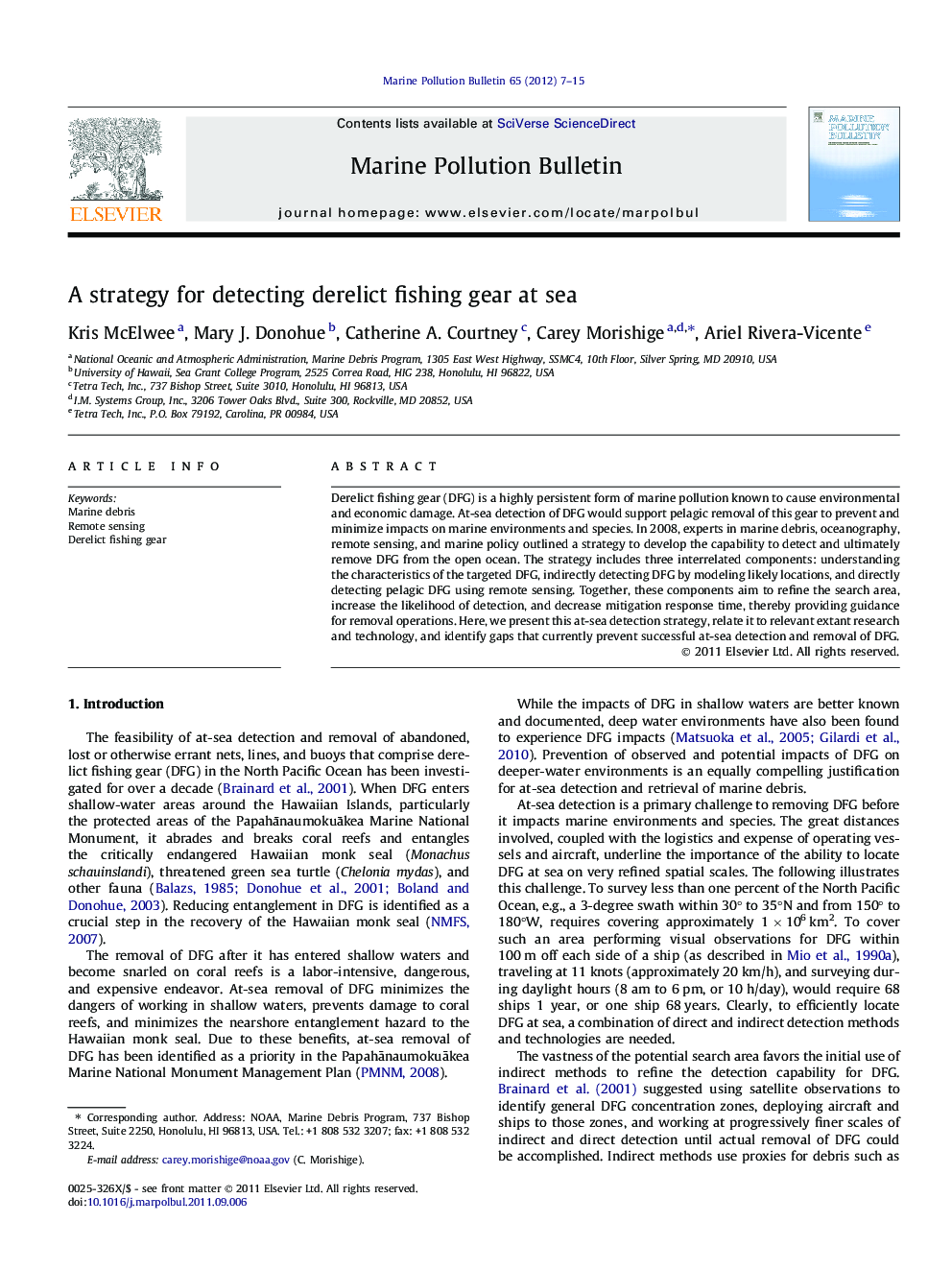| Article ID | Journal | Published Year | Pages | File Type |
|---|---|---|---|---|
| 4476798 | Marine Pollution Bulletin | 2012 | 9 Pages |
Derelict fishing gear (DFG) is a highly persistent form of marine pollution known to cause environmental and economic damage. At-sea detection of DFG would support pelagic removal of this gear to prevent and minimize impacts on marine environments and species. In 2008, experts in marine debris, oceanography, remote sensing, and marine policy outlined a strategy to develop the capability to detect and ultimately remove DFG from the open ocean. The strategy includes three interrelated components: understanding the characteristics of the targeted DFG, indirectly detecting DFG by modeling likely locations, and directly detecting pelagic DFG using remote sensing. Together, these components aim to refine the search area, increase the likelihood of detection, and decrease mitigation response time, thereby providing guidance for removal operations. Here, we present this at-sea detection strategy, relate it to relevant extant research and technology, and identify gaps that currently prevent successful at-sea detection and removal of DFG.
► In this study we outline a strategy for at-sea detection of derelict fishing gear (DFG). ► Three areas of the strategy: characteristics of DFG, indirect detection, direct detection. ► By focusing the search area and detecting DFG, removal in the open ocean may be possible.
